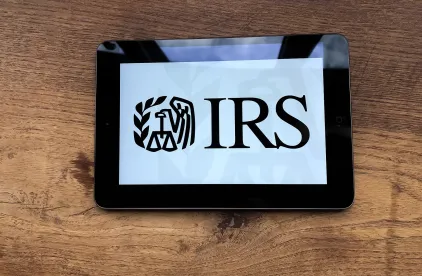Summary and Background. On March 28, 2022, the Biden Administration proposed a 20% minimum tax on individuals who have more than $100 million in assets. The minimum tax would be based on all economic income (which the proposal refers to as “total income”), including unrealized gain. The tax would be effective for taxable years beginning after December 31, 2022. The minimum tax would be fully phased in for taxpayers with assets of $200 million or more.
Under the proposal, an individual’s 2023 minimum tax liability would be payable in nine equal annual installments (e.g., in 2024-2032). For 2024 and thereafter, the minimum tax liability would be payable in five annual installments. The tax may be avoided by giving away assets to section 501(c)(3) organizations (including private foundations or donor-advised funds) or 501(c)(4) organizations before the effective date of the legislation so as to avoid the $100 million threshold.
The Biden proposal is an attempt to appeal to Senator Joe Manchin (D-W.Va.) and address some criticisms of Senator Ron Wyden’s (D-Or.) mark-to-market proposal. Senator Manchin has expressed support for a minimum 15% tax on individuals, and this support was apparently an impetus for the proposal. Senator Manchin has not, however, expressed support for a mark-to-market minimum tax, and the Biden Administration does not appear to have received any support from Senator Manchin before releasing its proposal.
The five-year payment period is an attempt to address concerns that Wyden’s proposal might overtax volatile assets, and to “smooth” taxpayers’ cash flows without the need for the IRS to issue refunds. Under the Biden Administration’s proposal, installment payments of the minimum tax may be reduced to the extent of unrealized losses.
The minimum tax is being described as a “prepayment” that may be credited against subsequent taxes on realized income. This description provides a backup argument on constitutionality: the minimum tax isn’t a tax on unrealized income but is merely a prepayment of tax on realized income.
Operation of the Minimum Tax. The minimum tax would apply to taxpayers with wealth (assets less liabilities) in excess of $100 million. The proposal does not define liabilities, and does not indicate whether a taxpayer would be deemed to own the assets of his or her children, or trusts. Therefore it is unclear as to whether a taxpayer who is close to the $100 million threshold may avoid the tax by giving away assets to children. As mentioned above, a taxpayer can give assets to section 501(c)(3) or 501(c)(4) organizations to avoid the threshold, and so, if the minimum tax is enacted, donations to charity would be expected to dramatically increase.
The proposal phases in for taxpayers with wealth between $100 million and $200 million. The phase in is achieved mechanically by reducing the tax liability to the extent that the sum of (w) the minimum tax liability, and (x) the uncredited prepayments exceeds two times (y) the minimum tax rate, times (z) the amount by which the taxpayer’s wealth exceeds $100 million. Thus, for a taxpayer with $150 million of wealth and a zero basis and no prior prepayments, the $30 million of minimum tax liability would be reduced by $10 million to equal $20 million. ($10 million is amount by which (x) $30 million exceeds (y) $20 million, which is 40% [two times the minimum tax rate] times $50 million [the amount by which the taxpayer’s wealth exceeds $100 million].)
A taxpayer subject to the minimum tax would make two calculations: Their “normal” tax liability under our current realization system, and the “minimum” tax under the proposal. Tax would be paid on the greater of the two.
For purposes of the 20% minimum tax, the taxpayer would include all unrealized gain on “tradeable assets.” The proposal does not define tradeable assets. Tradeable assets would be valued using end-of-year market prices. The taxpayer would also include all unrealized gain on “non-tradeable assets.” Non-tradeable assets would be valued using the greater of (i) the original or adjusted cost basis, (ii) the last valuation event from investment (i.e., a round of equity financing), (iii) borrowing (i.e., a lender’s appraisal), (iv) financial statements, or (v) other methods approved by the IRS. Original or adjusted cost basis would be deemed to increase at a rate equal to the five-year Treasury rate plus two percentage points. The five-year Treasury rate is currently 2.76% and so, at today’s rates, non-traded assets without a valuation event would deemed to increase in value at a 4.76% annual rate. The proposal would not require valuations of non-tradeable assets.
While a taxpayer would be subject to the minimum tax if it exceeds the normal tax, as mentioned above, payment of the minimum tax would be made in equal annual installments (nine for the first year of minimum tax liability and five thereafter).
So, assume that a taxpayer purchases an equity interest in a non-traded C corporation on January 1, 2023 for $200 million. The taxpayer has no realized income and no other assets. The taxpayer would have zero “normal” tax. Assume that the five-year Treasury rate is 2.76%. The investment would be deemed to increase in value by 4.76% (to $209.5 million). The minimum tax would be 20% of $9.5 million, or $1.9 million. If this was the taxpayer’s first year subject to the minimum tax, the minimum tax liability would be $211,111 in each of years 2024-32, subject to the “illiquid exception” described below. If the taxpayer subsequently sells the C corporation, it would credit the minimum tax prepayments against his or her income tax liability.
Payments of the minimum tax would be treated as a prepayment available to be credited against subsequent taxes on realized gains.
The Biden Administration has separately proposed that death would give rise to a realization event. If a taxpayer’s prepayments in excess of tax liability exceed gains at death, the taxpayer would be entitled to a refund. The refund would be included in a single decedent’s gross estate for estate tax purposes. Net uncredited used prepayments of a married decedent would be transferred to the surviving spouse (or as otherwise provided in regulations).
In contrast to Senator Wyden’s proposal, which does not require that tax be paid on unrealized gain for non-traded assets, and instead imposes a deferral charge upon realization, the Biden Administration’s proposal generally requires that minimum tax be calculated with respect to all unrealized gain, including deemed appreciation on non-traded assets, subject to an “illiquid exception.” If tradeable assets held directly or indirectly make up less than 20% of a taxpayer’s wealth, the taxpayer may elect to include only unrealized gain in tradeable assets in the calculation of their minimum tax liability. A taxpayer that makes this election would be subject to a deferral charge upon realization to the extent of gain, but the deferral charge would not exceed 10% of unrealized gain. The proposal does not indicate the rate of the deferral charge.
This aspect of the Biden Administration’s proposal provides a meaningful benefit to “illiquid” taxpayers and encourages taxpayers to become “illiquid” to qualify for the exception. The proposal provides that tradeable assets held “indirectly” are treated as owned by the taxpayer for this purpose and therefore it is unclear whether and to what extent taxpayers can contribute tradeable assets into nontradeable vehicles to qualify for the illiquid exception. The proposal would provide the IRS with specific authority to issue rules to prevent taxpayers from inappropriately converting tradeable assets to non-tradeable assets.
Estimated tax payments would not be required for minimum tax liability, and the minimum tax payments would be excluded from the prior year’s tax liability for purposes of computing estimated tax required to avoid the penalty for underpayment of estimated taxes.
The tax is expected to affect 20,000 taxpayers (in contrast to roughly 700 under Wyden’s plan) but to generate approximately the same amount of revenue as Wyden’s proposal: $360 billion over ten years as estimated by the Treasury Department (which is expected to be around $550 billion over 10 years under the Joint Committee on Taxation’s “scoring” methodology).





 />i
/>i
